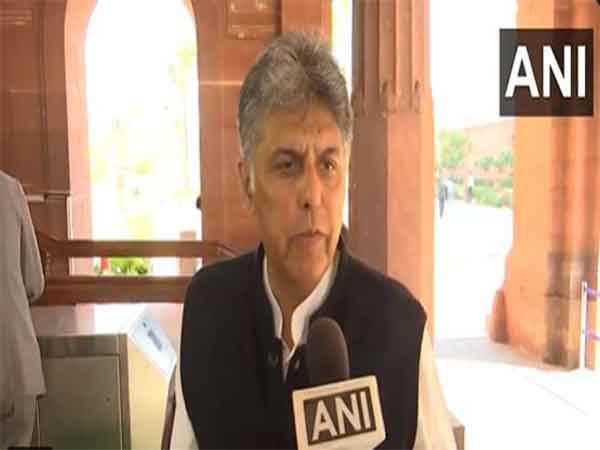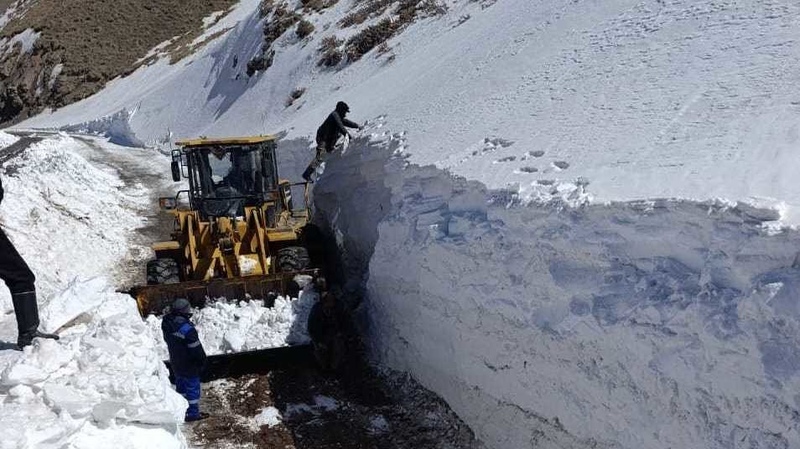
As with the budding trees and the mallard ducks skimming onto the Jordan River in front of his hovel, here was another sign of seasons changing for Johnny Bravo. That’s the name the 47-year-old homeless man gave, roused from inside his trash-strewn encampment on the edge of a spit of land in Salt Lake City known as “The Thumb.” Here came another cycle, Johnny Bravo said.
Another purge for this green but polluted pocket tucked along the river by the Glendale Golf Course near 2100 South and the Surplus Canal, a spot where nomads carve their lives into its earthen banks. (Chris Samuels | The Salt Lake Tribune) Brooke Grundy with the Salt Lake County Health Department inspects a shelter targeted for cleanup along the Jordan River in Salt Lake City. A crew of Salt Lake County health workers had just arrived to canvas the area in prelude to a joint city-county site cleanup days later.

They called out, offered help and gave out bottles of water to the handful of folks they encountered. (Chris Samuels | The Salt Lake Tribune) Unveiled in mid-January, Salt Lake City’s latest plan for stepped-up public safety enforcement included a more intense focus on illegal Jordan River encampments. County officials said along with aiding the unsheltered with outreach, they’re driven in this effort by environmental concerns — for one, trying to keep hazardous wastes from seeping into the watershed.
“If we wouldn’t want it in the landfill,” said Nicholas Rupp, communications director of the Salt Lake County Health Department, “we definitely don’t want it in the river.” (Chris Samuels | The Salt Lake Tribune) They delivered verbal warnings and hung notices on tents and bushes, including one next to Johnny Bravo’s shanty and his small empire of hoarded relics. Bright red letters told the ex-construction worker and prison inmate, who has been unsheltered for five years, that crews and bulldozers soon would wipe away his improvised homesite — just as they did last fall.
And the time before that. The discharge of barely surviving outdoors was everywhere on the ground. (Chris Samuels | The Salt Lake Tribune) Chaotic layers of possessions and debris blanketed the riverbank all about Johnny Bravo’s feet.
Busted appliances, scrap metal and shopping carts were a specialty, along with some of everything in between. (Rick Egan | The Salt Lake Tribune) The detritus sloped down the bank in spots and laced into gray-silted junk in the riverbed. “Ninety percent of my crap comes out of a dumpster,” Johnny Bravo told a visitor, boasting of his camping ingenuity.
“Maybe they can help me clear out some of this garbage.” Even with busy industrial yards, golfers and Jordan River Trail users just a short distance away, the gentle turn at this location makes hidden folds in the riparian way and an innate refuge for those living rough. “I love this river.
A lot of us do,” said a 43-year-old homeless woman camped there for most of the winter. “This is our Mother Earth.” (Rick Egan | The Salt Lake Tribune) With word of mouth of the cleanup spreading, she sorted her piles into black garbage bags.
Another woman rushed items into shopping carts and an ice chest with rollers. Johnny Bravo pulled back the opening to his inner sanctum — a tunnel dug some 6 feet into the side of the bank. He had lined the roof with metal and plastic sheeting and propped his walls with pallets and PVC piping.
A stove flue poked out. (Chris Samuels | The Salt Lake Tribune) He complained but did not linger. Grabbing a few items from his sleeping nook, he hopped on a bike and rode up the parkway.
Snow fell the next day, so health officials delayed another a week. “We try not to displace people,” said Rupp, “when there is snow in the ground.” (Rick Egan | The Salt Lake Tribune) Early the next Thursday, health officials, teams from contractor Advantage Services and Salt Lake City police in four marked cars, lights flashing, all took to the area.
Most of the campers were gone. (Rick Egan | The Salt Lake Tribune) Laborers in fluorescent vests, many formerly unsheltered folks themselves, fanned out with rakes and garbage bags. A Bobcat skid-steer loader gouged out huge bites of dirt and junk and chunks of makeshift shelters, dumping some 20 tons or more into hauling trailers (Rick Egan | The Salt Lake Tribune) After hours of cleaning and smoothing over of the scraped riverbank, camps on The Thumb were gone.
That bend in the Jordan looked a little more natural and less trashed — up to a point. (Rick Egan | The Salt Lake Tribune) The landscape still was flecked with litter and, yes, it was still a polluted stretch of river. According to Brooke Grundy, environmental hazard resource program manager with the county, crews weren’t able to pull junk and garbage from the actual waterway — so a lot of that stayed.
(Chris Samuels | The Salt Lake Tribune) Of the half-dozen encampments cleared out, unsheltered people were living again on at least three of them within 24 hours. (Chris Samuels | The Salt Lake Tribune) Some came back with bins and shopping carts to comb the remnants. One person pitched a small tent in the same cavity where a large, robust lean-to had been ripped out.
(Chris Samuels | The Salt Lake Tribune) A man and woman sat forlorn with their leashed pit bull atop another fresh dirt mound, trying to fix a flat bike tire. (Chris Samuels | The Salt Lake Tribune) Johnny Bravo returned, too. He said he and a girlfriend managed to shelter for the night with some tarps they found wadded up under a tree.
(Chris Samuels | The Salt Lake Tribune) Next morning, he scavenged over the bald mud bank where his hut stood looking for tools as he rebuilt. “They took my house again,” Johnny Bravo groused. “Kick a man while he’s down.
”.











